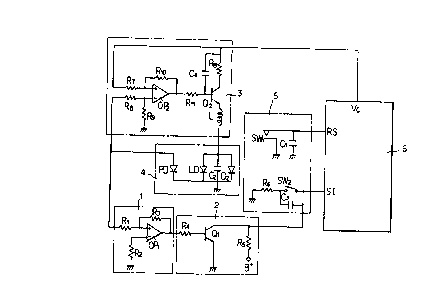Some of the information on this Web page has been provided by external sources. The Government of Canada is not responsible for the accuracy, reliability or currency of the information supplied by external sources. Users wishing to rely upon this information should consult directly with the source of the information. Content provided by external sources is not subject to official languages, privacy and accessibility requirements.
Any discrepancies in the text and image of the Claims and Abstract are due to differing posting times. Text of the Claims and Abstract are posted:
| (12) Patent: | (11) CA 1328311 |
|---|---|
| (21) Application Number: | 1328311 |
| (54) English Title: | PROTECTION CIRCUIT FOR OPTICAL DISC PLAYERS |
| (54) French Title: | CIRCUIT POUR LA PROTECTION DES LECTEURS DE DISQUE OPTIQUE |
| Status: | Term Expired - Post Grant |
| (51) International Patent Classification (IPC): |
|
|---|---|
| (72) Inventors : |
|
| (73) Owners : |
|
| (71) Applicants : | |
| (74) Agent: | MARKS & CLERK |
| (74) Associate agent: | |
| (45) Issued: | 1994-04-05 |
| (22) Filed Date: | 1989-07-05 |
| Availability of licence: | N/A |
| Dedicated to the Public: | N/A |
| (25) Language of filing: | English |
| Patent Cooperation Treaty (PCT): | No |
|---|
| (30) Application Priority Data: | ||||||
|---|---|---|---|---|---|---|
|
ABSTRACT OF THE DISCLOSURE
A protection circuit for optical disc players which can
prevent the unnecessary radiation of laser beams due to a
malfunction of the player. The circuit includes a laser
radiating and detecting means which detects the laser beams
reflected from an optical disc and a driving means which
receives the detected signal from the laser radiating and
detecting means and controls a microcomputer to cut out the
supply of a driving voltage to the laser radiating and
detecting means when the optical disc is not placed on a disc
table.
Note: Claims are shown in the official language in which they were submitted.
Note: Descriptions are shown in the official language in which they were submitted.

2024-08-01:As part of the Next Generation Patents (NGP) transition, the Canadian Patents Database (CPD) now contains a more detailed Event History, which replicates the Event Log of our new back-office solution.
Please note that "Inactive:" events refers to events no longer in use in our new back-office solution.
For a clearer understanding of the status of the application/patent presented on this page, the site Disclaimer , as well as the definitions for Patent , Event History , Maintenance Fee and Payment History should be consulted.
| Description | Date |
|---|---|
| Inactive: IPC expired | 2012-01-01 |
| Inactive: Expired (old Act Patent) latest possible expiry date | 2011-04-05 |
| Inactive: IPC from MCD | 2006-03-11 |
| Inactive: IPC from MCD | 2006-03-11 |
| Inactive: IPC from MCD | 2006-03-11 |
| Inactive: IPC from MCD | 2006-03-11 |
| Inactive: IPC from MCD | 2006-03-11 |
| Grant by Issuance | 1994-04-05 |
There is no abandonment history.
| Fee Type | Anniversary Year | Due Date | Paid Date |
|---|---|---|---|
| MF (category 1, 4th anniv.) - standard | 1998-04-06 | 1998-03-26 | |
| MF (category 1, 5th anniv.) - standard | 1999-04-06 | 1999-04-06 | |
| MF (category 1, 6th anniv.) - standard | 2000-04-05 | 2000-03-16 | |
| MF (category 1, 7th anniv.) - standard | 2001-04-05 | 2001-03-16 | |
| MF (category 1, 8th anniv.) - standard | 2002-04-05 | 2002-03-18 | |
| MF (category 1, 9th anniv.) - standard | 2003-04-07 | 2003-03-17 | |
| MF (category 1, 10th anniv.) - standard | 2004-04-05 | 2004-03-17 | |
| MF (category 1, 11th anniv.) - standard | 2005-04-05 | 2005-03-07 | |
| MF (category 1, 12th anniv.) - standard | 2006-04-05 | 2006-03-06 | |
| MF (category 1, 13th anniv.) - standard | 2007-04-05 | 2007-03-08 | |
| MF (category 1, 14th anniv.) - standard | 2008-04-07 | 2008-03-07 | |
| MF (category 1, 15th anniv.) - standard | 2009-04-06 | 2009-03-26 | |
| MF (category 1, 16th anniv.) - standard | 2010-04-06 | 2010-03-24 |
Note: Records showing the ownership history in alphabetical order.
| Current Owners on Record |
|---|
| RAE HWAN LEE |
| Past Owners on Record |
|---|
| None |